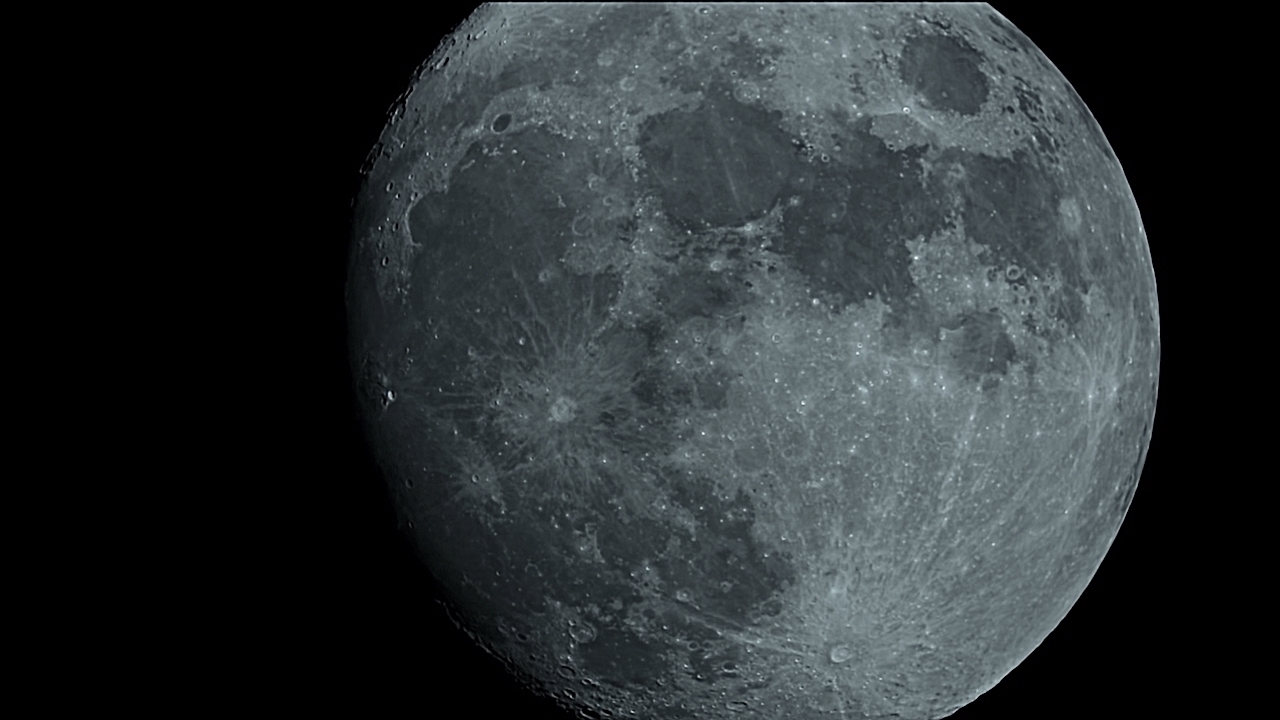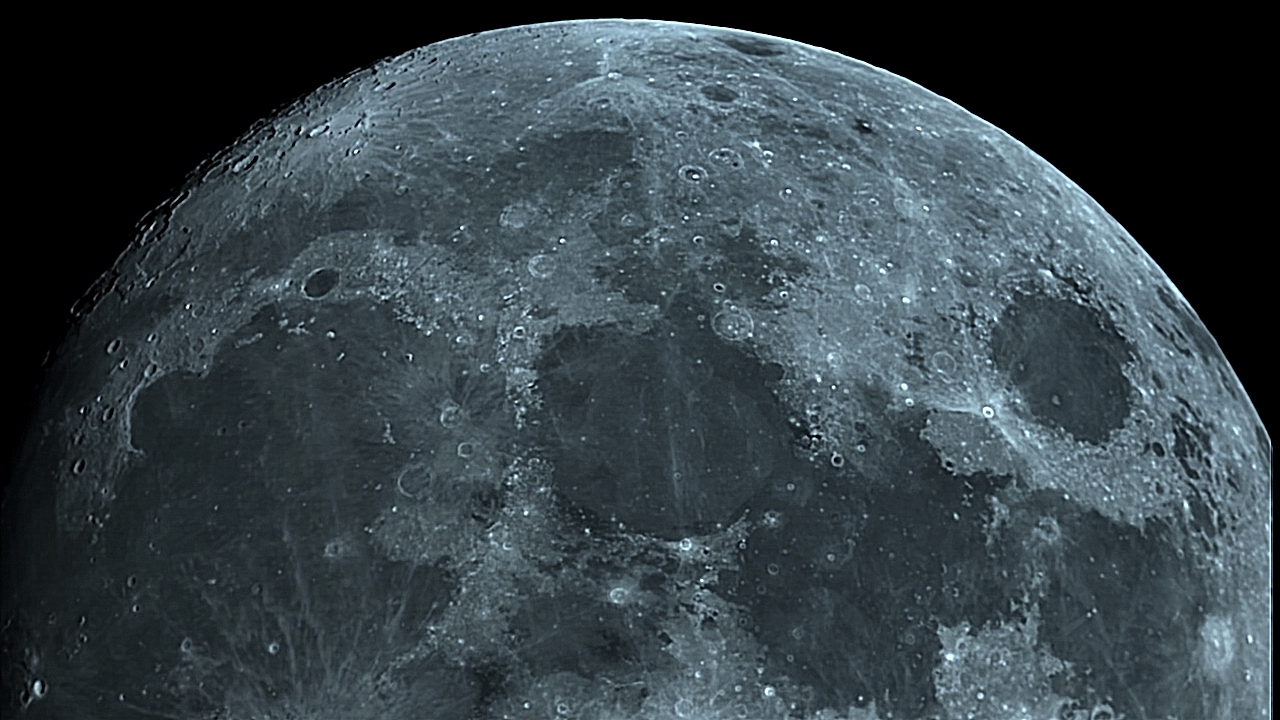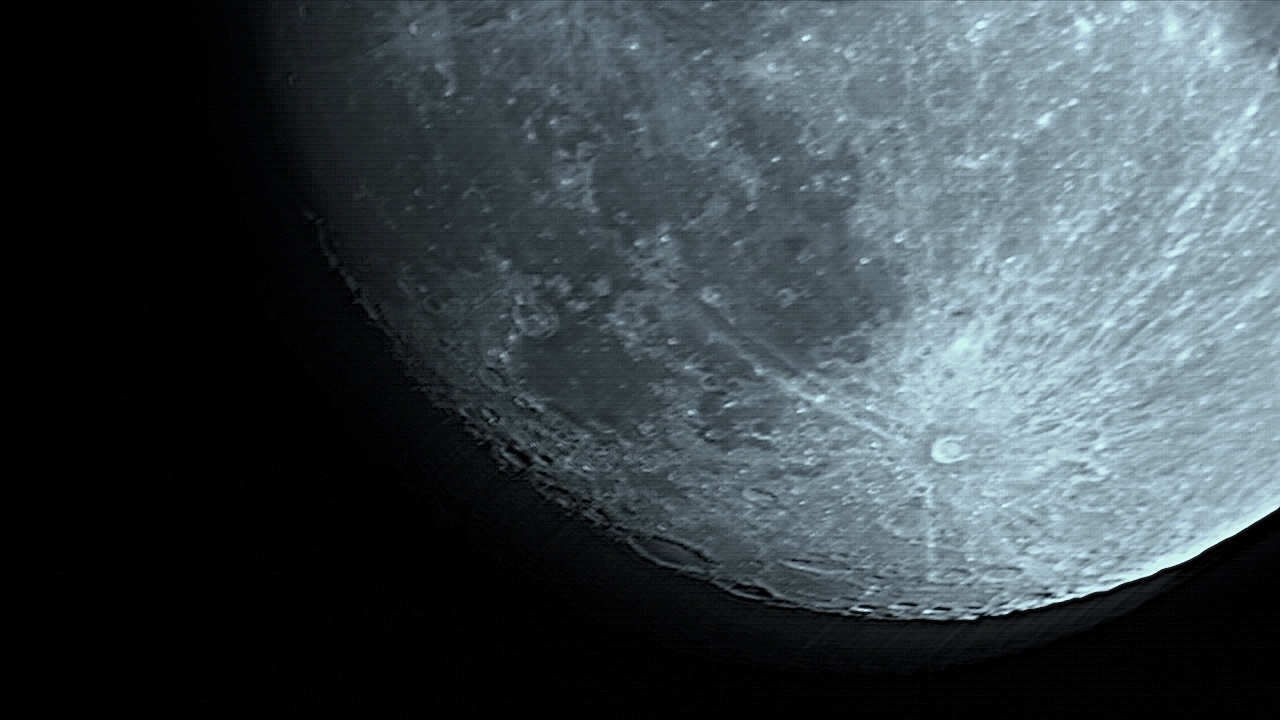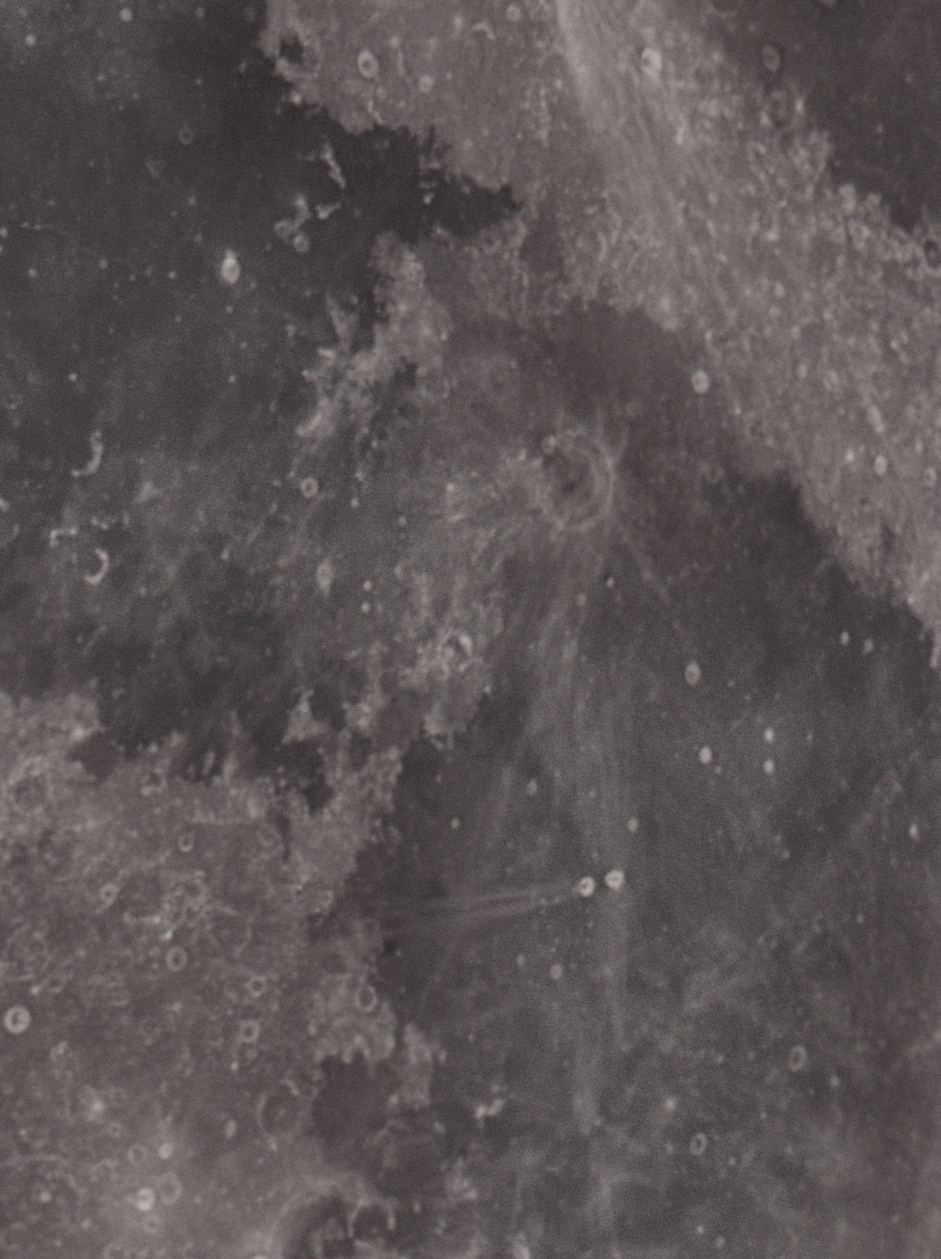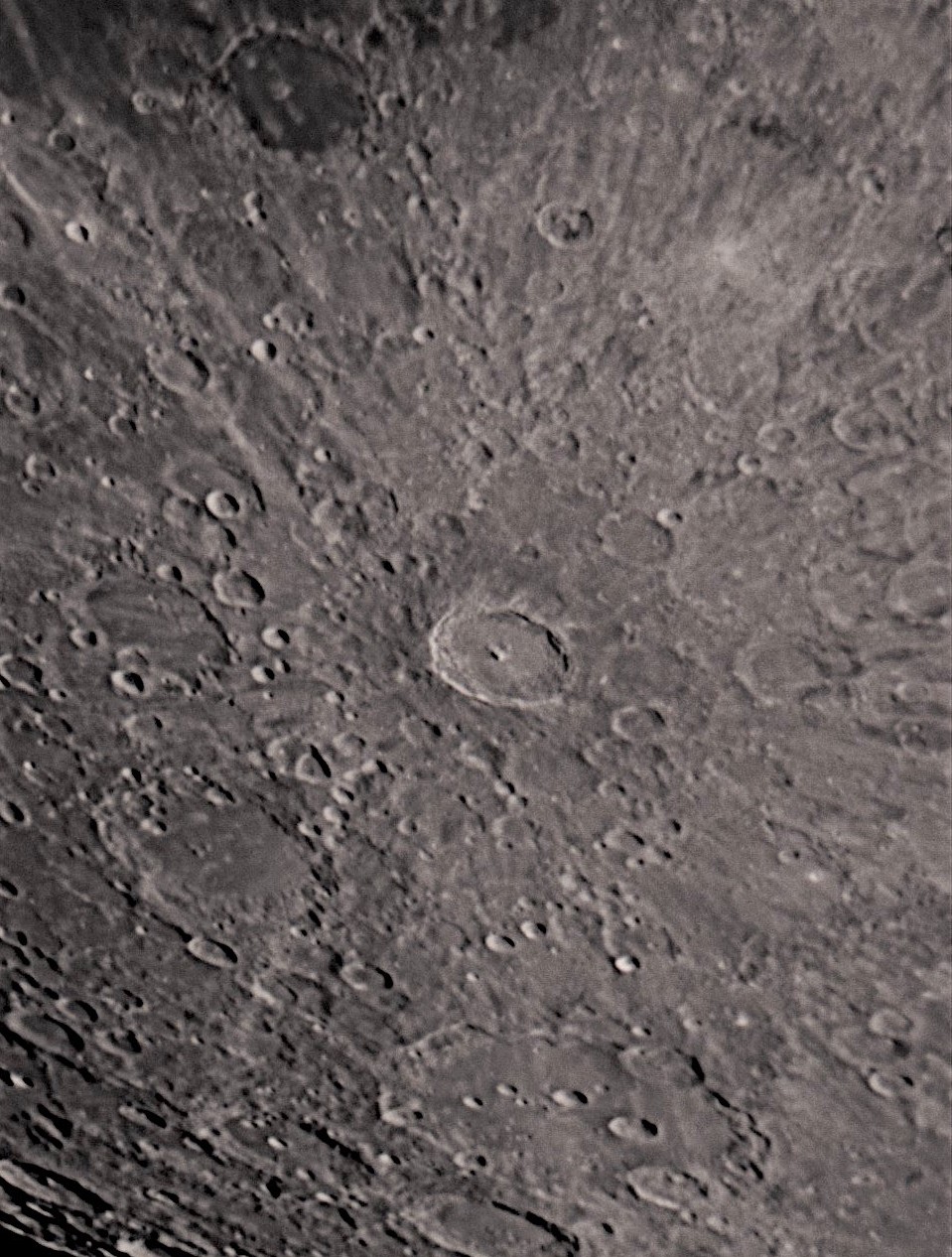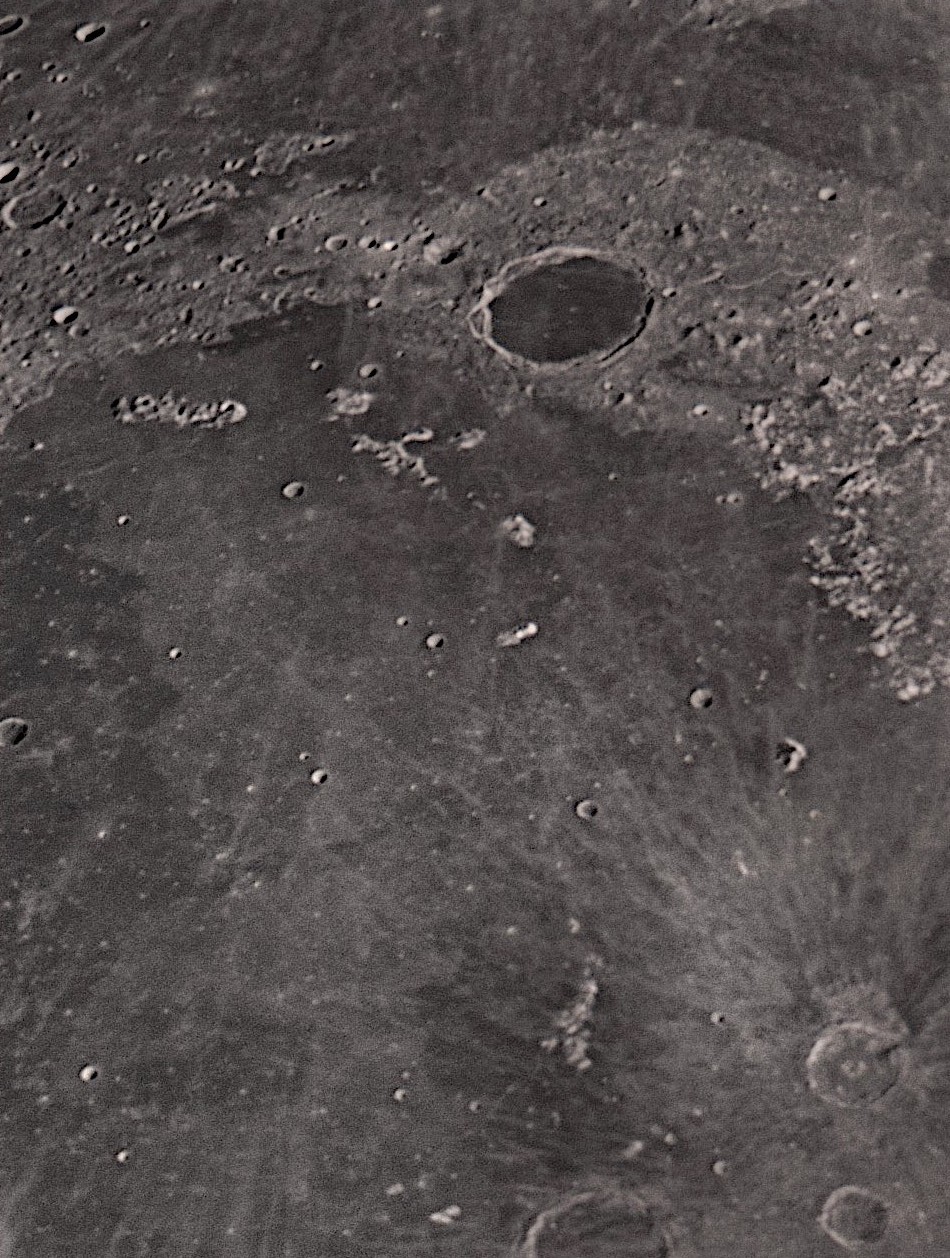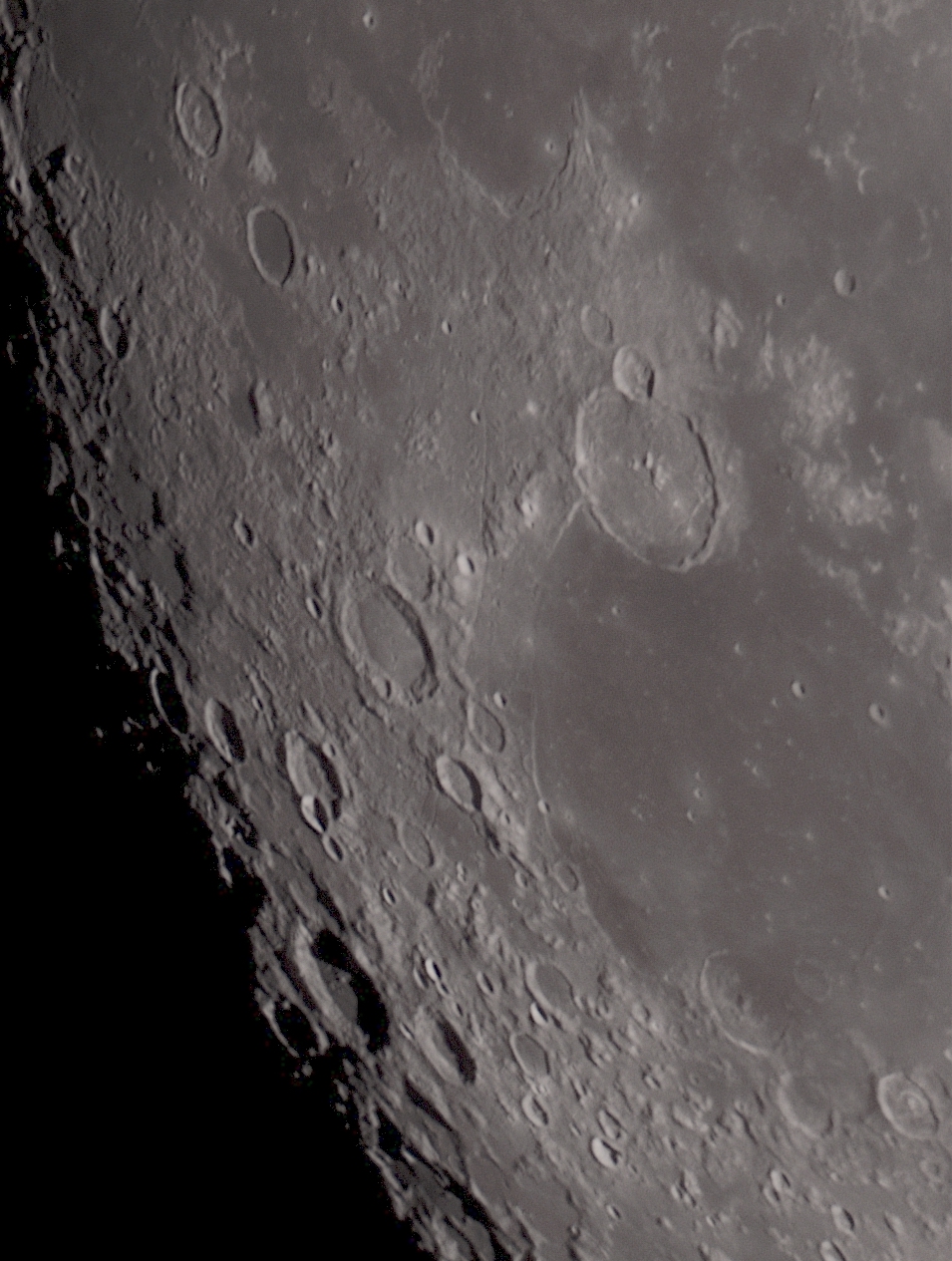Details
Sydney's goal was to produce images that show the different types of terrain on the lunar surface. Early in its history, the still-forming lunar surface was bombarded with debris, forming craters that stacked and stacked upon each other, producing jumbled mountainous terrain that we know as the lunar highlands. However, toward the end of this period, several impacts of major bodies managed to rupture the solidifying surface and lava upwelled and filled these large craters, producing what we see as the darker maria (seas).
It requires a high magnification telescope to see these details, but first Sydney used a focal reducer lens and a larger DSLR camera sensor to record wider field views. She then switched to a 2x Barlow lens and a smaller 'planetary' camera to record the close-up views. Unlike the imaging of dim deep-sky objects, the Moon shines brightly with reflected sunlight, so long exposures are not needed. Instead, short movies are recorded containing a few hundred or thousand frames. The clearest of these frames can be combined in a technique called 'lucky imaging'. These combined images can then be further processed to bring out details that would not be clear in the individual frames.

